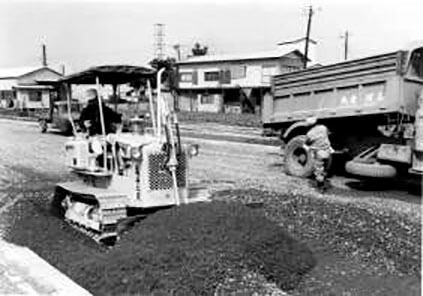1970
Since this era, the focus of domestic demand gradually started shifting from bulldozers to hydraulic shovels. Additional considerations, such as ease of operation, also became an important aspect of design.

While companies like Mitsubishi Heavy Industries and Nittoc Construction were already mass-producing small bulldozer, Komatsu and Caterpillar came in rather late with the development of bulldozers of this class.
After development of D20A, however, Komatsu continued adding more series of small bulldozers including dozer shovels, swamp bulldozers, trimming dozers for unloading iron ore and coal from ships, etc.
Weight: 2950kg
Bulldozer
Since its first emergence in 1951, it took only 50 years for the hydraulic shovel to establish its primary position on construction sites worldwide. Its size ranges from mini to super size depending on the scale of construction, and during the half century, it kept evolving by achieving a minimum rear-swing radius and adapting styles that would work with characteristics of each site. Mirroring the movement of a human hand, a hydraulic shovel will continue to evolve during the 21st century.